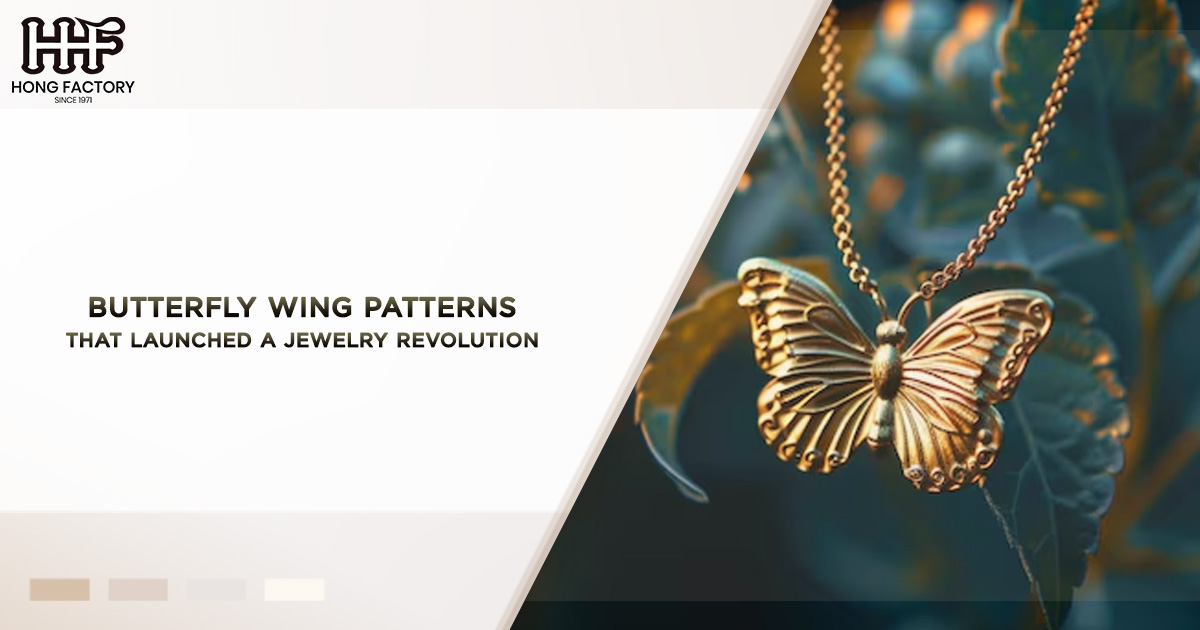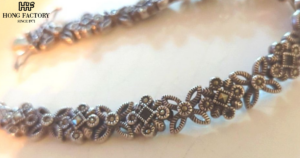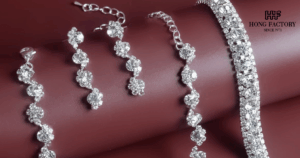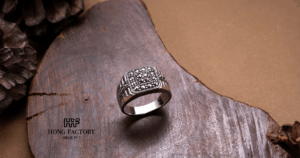In the dazzling world of jewelry design, inspiration often springs from the most unexpected sources. One of nature’s most exquisite muses is the butterfly, a creature that has captivated humans for centuries with its vibrant colors, intricate patterns, and delicate grace.
The startling beauty of butterfly wing patterns has transcended the natural world, becoming a cornerstone of innovative jewelry design. This article explores how butterfly inspiration, nature patterns, iridescent design, and biodiversity have spurred a revolution in jewelry, weaving together artistry and nature in mesmerizing ways.
The Allure of Butterfly Wings
Butterflies are renowned for their astonishing variety and visual splendor. Their wings, nature’s canvases, are masterpieces of art featuring an array of colors and patterns that range from the subtle to the spectacular. These patterns are not merely decorative but serve crucial functions in the butterfly’s life, such as camouflage, mating, and predator deterrence. For instance, the eye spots on some butterfly wings can startle predators, giving the butterfly a chance to escape.
The iridescent design observed in many butterfly species, such as the Blue Morpho, results from microscopic structures that diffract light. These structures create a shimmering effect that changes with the angle of view, a phenomenon known as structural coloration.
Unlike pigment-based colors, structural colors are produced by the physical arrangement of materials interacting with light, offering an intensity and brilliance that have fascinated scientists and artists alike. This dynamic beauty captures the imagination of designers, prompting them to replicate these effects in their creations through innovative techniques.
Butterfly Inspiration in Jewelry Design
The leap from observing the natural elegance of butterflies to translating it into jewelry is both logical and imaginative. Jewelers leverage the intricate patterns and vibrant hues of butterfly wings to craft pieces that are not only aesthetically pleasing but also carry a deeper connection to the natural world.
Incorporating Nature Patterns
Designers incorporate butterfly patterns by using a variety of methods. Direct imitation involves capturing the essence of specific wing patterns and translating them into materials like gold, silver, and gemstones. This can be seen in the delicate filigree work that mirrors the lattice-like structures of veins in a butterfly wing.
Enameling techniques allow jewelers to recreate the vivid color palettes of butterflies, using layers of colored glass to create smooth, durable surfaces that capture the depth and luminosity of butterfly wings. Furthermore, gemstone selection plays a crucial role in mirroring the iridescent shimmer of butterfly wings.
Jewelers often choose opals, moonstones, or labradorites for their natural ability to mimic light-reflecting properties, providing a lifelike representation of butterfly wings’ dazzling beauty.
The Role of Iridescent Design
Iridescent design is a powerful tool in the jeweler’s arsenal. By utilizing materials that mimic the reflective qualities of butterfly wings, such as opals or applying iridescent coatings on metals, designers create jewelry that captures the essence of butterflies’ changing hues. Techniques like anodizing titanium and niobium can produce a range of iridescent colors by controlling the thickness of oxide layers on the metal surface. This not only enhances the visual appeal but also imbues the piece with an aspect of movement and life, akin to the flutter of a butterfly in the sun.
The Connection Between Biodiversity and Jewelry Artistry
The vast diversity among butterflies provides an endless palette for creativity. Each species, from the Monarch to the Swallowtail, offers unique patterns and colors, ensuring that jewelry inspired by butterflies is as varied as the creatures themselves. This biodiversity is crucial for artists seeking new ideas and concepts, allowing for an ever-evolving range of jewelry pieces that can appeal to different tastes and preferences.
Jewelry that draws from such biodiversity also serves as a reminder of the importance of preserving these magnificent creatures and their habitats. Many jewelry designers engage in sustainable practices, sourcing materials responsibly and raising awareness about environmental issues through their work. By highlighting the beauty of endangered species, such pieces become a powerful tool for conservation, fostering a deeper appreciation and urgency to protect biodiversity.
The Cultural and Symbolic Significance of Butterflies
Butterflies hold deep cultural and symbolic meanings across various societies. In many cultures, they are seen as symbols of transformation, freedom, and the transient nature of life. In Japan, butterflies are often associated with the soul and are considered symbols of marital happiness. In Native American cultures, butterflies are seen as messengers of change.
These rich symbolic associations add layers of meaning to butterfly-inspired jewelry, transforming pieces into more than just fashion statements. They become tokens of hope, change, and renewal. Designers often infuse these symbolic elements into their creations, offering pieces that resonate with personal significance and emotional depth. This enhances the appeal of butterfly-inspired jewelry, allowing wearers to express individuality and personal narratives through their adornments.
The Future of Butterfly-Inspired Jewelry
With advancements in technology and a growing appreciation for sustainable practices, the future of butterfly-inspired jewelry looks promising. Innovations such as 3D printing and laser cutting enable more precise and intricate designs, allowing for even closer emulation of butterfly wing patterns. These technologies also facilitate environmentally friendly manufacturing methods, aligning with the ethos of preserving the very nature that inspires these designs.
Moreover, collaborations between scientists and artists are becoming more common, leading to a deeper understanding of butterfly wing structures and their application in design. This interdisciplinary approach encourages the creation of pieces that are not only beautiful but also scientifically informed, offering a new dimension of appreciation. For instance, the study of photonics in butterfly wings may lead to new jewelry designs that incorporate light manipulation, creating pieces that truly embody the ethereal quality of butterfly wings.
Conclusion
The butterfly has unquestionably launched a revolution in jewelry design, marrying the elegance of nature with human artistry. By drawing on butterfly inspiration, nature patterns, iridescent design, and biodiversity, jewelers create pieces that are as enchanting as they are meaningful.
This ongoing dialogue between the natural world and human creativity not only produces stunning adornments but also fosters a deeper connection to the environment and its preservation. As we continue to explore the wonders of the butterfly, we find endless possibilities for innovation and expression in the world of jewelry, ensuring this trend remains both timeless and forward-thinking.




